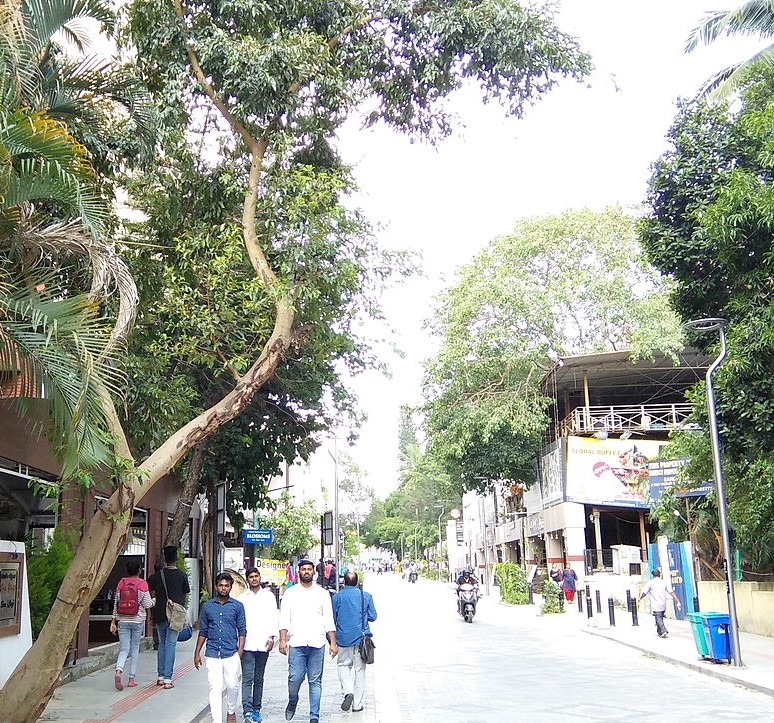Bangalore is called the ‘Garden City’ owing to its gardens, parks, and lakes. But is the name still appropriate for the city? It’s a million-dollar question because of the city’s depleting green cover. So, let’s delve into the details of trees in Bangalore being felled for further urbanisation, whether adequate measures are being taken to replant, and how Gen Z views the decreasing tree cover in Bangalore.

Trees in Bangalore and the changing climatic condition of the city
Solar energy is the main reason that determines the temperature of a city. Water bodies and green cover absorb the heat, rendering a cool climate to the region. The green cover in Bangalore and lakes ensured a pleasant climate earlier. However, many trees in Bangalore were cut owing to unplanned urbanisation, which has caused a dramatic change in its climate. According to T.V. Ramachandra of IISc, back in 1992, when the green cover in Bangalore was good, the temperature was around 21 degrees Celsius. Lately, however, having lost significant tree cover, Bangalore’s temperature has now been around 36 to 39 degrees Celsius. Furthermore, the decrease in greenery has resulted in air pollution as well.
What is the green cover percentage in Bangalore?
The urban area in Bangalore has seen a massive expansion since 1973, with 1055% from just about 8% to 93.3% in 2023. Hence, there has been a decrease in the green cover by 88%. At present, the number of trees in Bangalore is only about 1.5 million for a 9.5 million population, with just one tree for every seven individuals. As per Prof T.V. Ramandra of IISc’s Centre for Ecological Sciences, the present tree cover in Bangalore is inadequate to meet the respiratory carbon sequestration requirement.
Tree per person count in some areas in Bangalore
Trees in Dayananda Nagar, Shivajinagar, Chickpete, Padarayanapura and Kempapura Agrahara wards have significantly fewer trees, with less than one tree for every 500 people. Bellandur, Jakkur, Agara, Varthur, and Aramane Nagar have at least one tree per person.
Types of trees that make up for the green cover in Bangalore
Apart from the flowering trees in Bangalore that line the roads, listed below are some of the trees that make up for the green cover in Bangalore.
- Jackfruit (Artocarpus heterophyllus)
- Red Silk Cotton (Bombax ceiba)
- Alada Mara (Ficus benghalensis)
- Neem (Azadirachta indica)
- Sausage tree (Kigelia pinnata)
- Ashwatha (F.Religiosa)
- Pride of India (Lagerstroemia speciosa)
- Honge (Pongamia pinnata)
- Mango (Mangifera Indica)
- Ippe (Madhuca longifolia)
- Kadamba (Neolamarckia cadamba)
- Malabar Neem (Melia dubia)
- Jaamun (Syzygium cumini)
- Mahogany (Swietenia macrophylla)
- Tabebuia Spectabilis
- Honne (Pterocarpus marsupium)
GenZ in a warming Bangalore
Unlike the others, GenZ is under pressure to thrive in a warm Bangalore with decreasing green cover. Building the entire ecosystem is considered an efficient measure, apart from replanting trees, especially in the same area.
Replanting of trees in Bangalore as a corrective measure
According to Vinod Jacob of Namma Bengaluru Foundation General Manager, when trees in Bangalore are cut, the BBMP Forest Department must take measures to replant trees within a radius of 5km from where they are cut. Hence, it wouldn’t help if trees were planted elsewhere in Karnataka as compensatory measures. Also, trees should be planted at a ratio of 1:10, which means for one tree cut, ten trees ought to be planted. However, it is difficult to do so because of the lack of space in the city.
Professor Rao suggests that the government acquire more land in addition to the required area for a road project. This is to ensure that while trees are cut for development plans, they can be replanted in the same area as practised in China and other countries.
In addition, BBMP has also started to count the number of trees in Bangalore, for which the data will be ready in the next six months, according to DCF Swamy. However, as per the satellite data there has been a perpetual decrease in the tree cover in the Green city.
To conclude, to protect Bangalore’s tree cover, quick and efficient corrective measures must be taken to ensure that the city remains green.